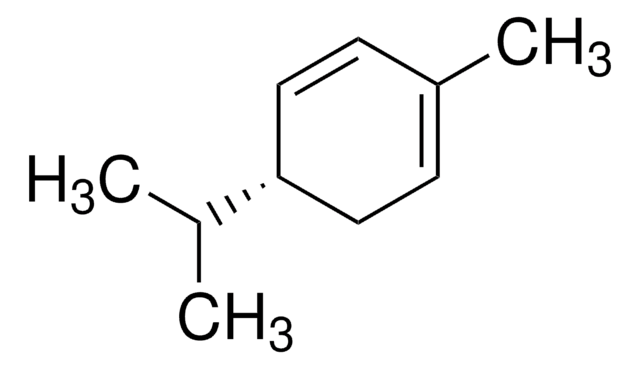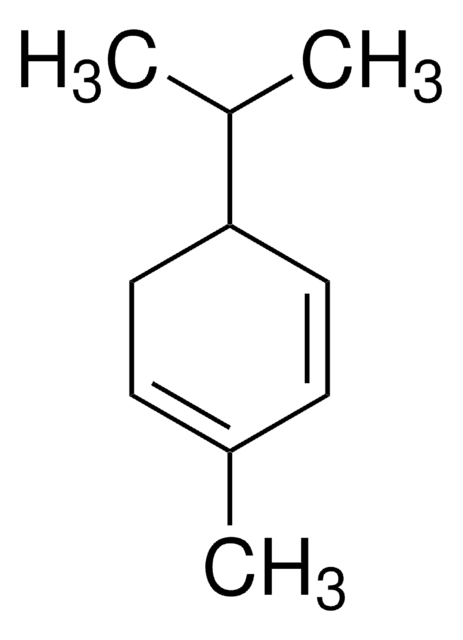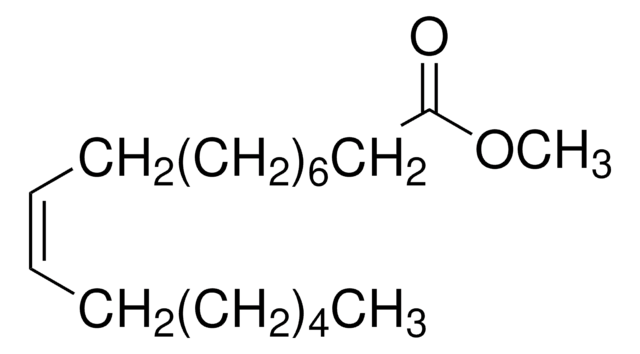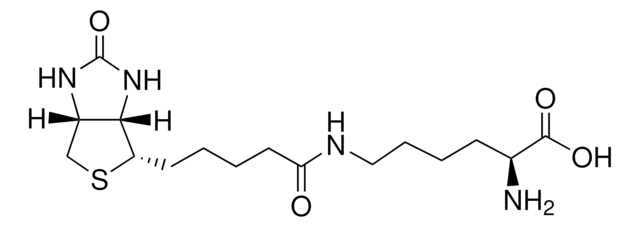87117
Nervonic acid
analytical standard
Sinonimo/i:
cis-15-Tetracosenoic acid, Selacholeic acid
About This Item
Prodotti consigliati
Grado
analytical standard
Livello qualitativo
Saggio
≥99.0% (GC)
Durata
limited shelf life, expiry date on the label
tecniche
HPLC: suitable
gas chromatography (GC): suitable
Punto di fusione
42-43 °C (lit.)
Formato
neat
Gruppo funzionale
carboxylic acid
Condizioni di spedizione
ambient
Temperatura di conservazione
−20°C
Stringa SMILE
CCCCCCCC\C=C/CCCCCCCCCCCCCC(O)=O
InChI
1S/C24H46O2/c1-2-3-4-5-6-7-8-9-10-11-12-13-14-15-16-17-18-19-20-21-22-23-24(25)26/h9-10H,2-8,11-23H2,1H3,(H,25,26)/b10-9-
GWHCXVQVJPWHRF-KTKRTIGZSA-N
Cerchi prodotti simili? Visita Guida al confronto tra prodotti
Descrizione generale
Applicazioni
- Berry seed extract samples by gas chromatography equipped with mass spectrometer detector (GC-MSD).
- Human blood by isotope-dilution gas chromatography-negative chemical ionization-mass spectrometry (ID-GC-NCI-MS).
- Human plasma samples employed in the clinical smoking cessation study by GC combined with time-of-flight mass spectrometry operating under the electron ionization (EI) mode.
- Brain tissue samples by GC-MS.
Prodotti consigliati
Codice della classe di stoccaggio
11 - Combustible Solids
Classe di pericolosità dell'acqua (WGK)
WGK 3
Punto d’infiammabilità (°F)
230.0 °F - closed cup
Punto d’infiammabilità (°C)
110 °C - closed cup
Dispositivi di protezione individuale
dust mask type N95 (US), Eyeshields, Gloves
Scegli una delle versioni più recenti:
Possiedi già questo prodotto?
I documenti relativi ai prodotti acquistati recentemente sono disponibili nell’Archivio dei documenti.
I clienti hanno visto anche
Il team dei nostri ricercatori vanta grande esperienza in tutte le aree della ricerca quali Life Science, scienza dei materiali, sintesi chimica, cromatografia, discipline analitiche, ecc..
Contatta l'Assistenza Tecnica.













